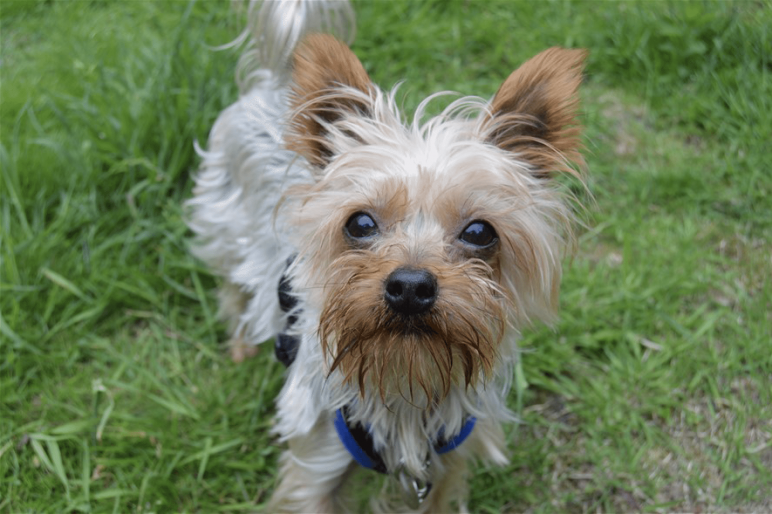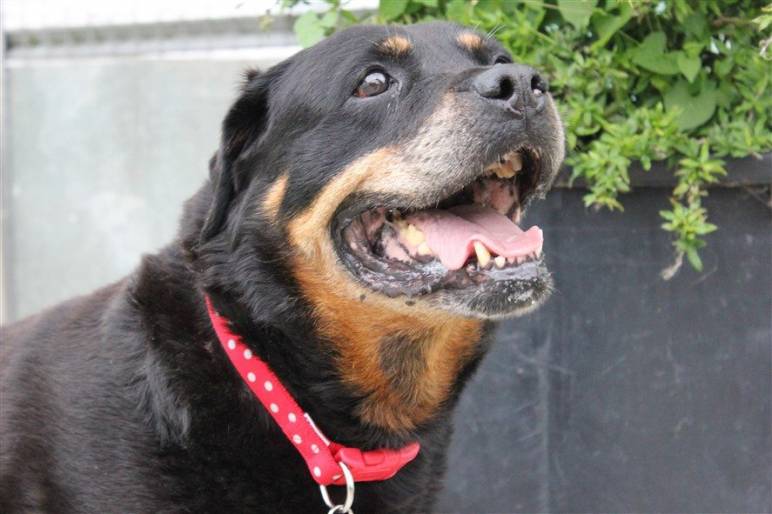Pedigree Pitfalls
Having a dog in your life can be incredibly rewarding! Our animal companions are an extension of our family and should always be treated as such. With this in mind it is crucial when planning for a canine addition to your family, that you do your research first and ensure you find the right type of dog for you!
Some pedigree dogs have very specific needs and may be prone to suffer from certain health conditions. You need to be honest about what you can offer a dog and knowledgeable regarding what the dog will need from you. It’s important that you take the time to find out what you are taking on, and be sure you can meet all their health needs. A dog is for life after all – that is a big commitment
To help you in making an educated choice we have put together this list of the most popular pedigree dog breeds along with a snap shot for each breed of their typical personality and most common health issues. Don’t panic – it is very unlikely that your dog will encounter all of the problems listed here! It is however important to be aware that they may well be affected by some of them, at some point in their lifetime. It’s important to realistic and acknowledge that what affects them, will also affect you be that physically, mentally, or financially.
The five most common problems in pedigree dogs are:
• Difficulty breathing
• Difficulty giving birth
• Difficulty walking
• Serious skin problems
• Serious eye problems
Before you buy a dog please ask yourself ‘where has it come from’. Everyone has heard of the horrors of puppy farms, and people independently over breeding from exhausted, unhealthy, and unhappy dogs at home. A dog from situations such as these will inevitably be even more at risk of poor health, and more susceptible to chronic conditions.
“At Freshfields we receive countless phone calls daily from people who can no longer keep their dogs. Many of these dogs are pedigrees; in fact dogs from every one of the breeds listed below have been in rescue with us at one time or another. There are thousands of dogs in rescue centres across the UK so please, always go to a rescue before buying from a breeder, or from a free ad. Please also remember that the dog is more important than the breed and that there are many cross breeds desperate for new homes too!”
Breed specific rescues exist for virtually every type of pedigree. This nationwide site DogsBlog provides a list of rescue pedigrees needing a home or call Freshfields on 0151 931 1604 for further advice.
Breed Information
Beagle
 Beagles tend to be people and animal friendly, always happy, playful and content. They also love to dig, chase, be destructive and howl when they are bored!, They need much more exercise than people think, and remember – the Beagle is a scent hound, developed primarily to hunt hares.
Beagles tend to be people and animal friendly, always happy, playful and content. They also love to dig, chase, be destructive and howl when they are bored!, They need much more exercise than people think, and remember – the Beagle is a scent hound, developed primarily to hunt hares.
Common health problems affecting Beagles include:
Ear and skin diseases. These are notoriously severe in Beagles. The design of their large, floppy ears and very narrow ear canals mean they are prone to chronic ear infections and hematomas. They are also prone to allergies that lead to itchy skin and bacterial infections. Demodectic mange is very common in puppies, the skin disease seborrhea is also widespread. Skin growths like cysts and lipomas, and mast cell, sebaceous tumours are also common.
Eye problems. Beagles are unfortunately susceptible to just about every eye disease there is. Glaucoma and cherry eye is the most common, but also retinal dysplasia, progressive retinal atrophy, corneal dystrophy, cataracts, dry eyes, eyelid abnormalities, eyelash abnormalities, lens luxation, and persistent papillary membranes.
Intervertebral Disc Disease (IDD). As one of the chondrodystrphic breeds (others include Dachshund, Corgi, Pekinese, French Bulldog, Bassett Hound, Lhasa Apsa, Shih Tzu), the beagle is prone to this condition. Chondrodystrophic dogs tend to have short legs and longer backs. Beagles are prone to this condition at a much earlier age than any other dog. IDD is where the cushioning discs between the vertebrae of the spinal column either bulge or burst. This can cause pain, nerve damage, and even paralysis. Chondrodystrophy is unfortunately just seen as a characteristic of pedigrees which have these exaggerated features. There are back braces available which offer support, stability and stress relief for these dogs.
Hip Dysplasia. Although a relatively small dog, beagles commonly suffer from hip dysplasia. This is the malformation of the hip joint(s). It is painful and debilitating, and results in osteoarthritis. As the condition progresses some dogs may not want to walk, and may even need help getting up. Luxating patella’s (loose knees) are also common
Epilepsy. This is a serious concern for this breed, but can be controlled with medication. It is quite common.
Pulmonic Stenosis. This heart disease can unfortunately cause sudden death.
Hypothyroidism. This is when the thyroid gland doesn’t work properly. Hyperthyroidism means the glands are working overtime, secreting too much hormone, which causes a constant state of metabolic hyperactivity. The dog will lose weight despite being constantly hungry, drink excessively, urinate excessively, have increased heart rate, and also vomit. If left untreated this condition can cause heart and kidney failure. If there is a problem you may notice a dull coat, hair loss, lethargy, intolerance to cold weather, weight gain and chronic skin disorders. To control this condition your dog will need daily medication.
Border Collie
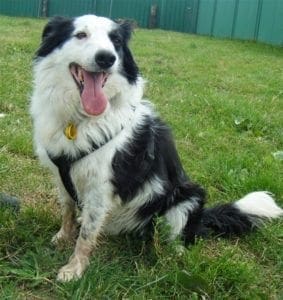
This is a perfect dog for active outdoor people. They are full of energy, very intelligent, and crave mental stimulation. They are master escape artists, and they love to gather things up – be it sheep, dogs, deer, cars, bikes or joggers. They can be obsessive and intense. There are a range of health problems that are specific to the Border Collie, along with other more general issues.
Common health problems affecting Collies include:
Collie eye anomaly. This condition is inherited from parents or a parent. The chromosomes that determine the development of the eye are mutated, which leads to underdevelopment. This always affects both eyes, although one eye might be more severely affected than the other. This condition will eventually lead to blindness.
Collie hearing. There are two types of genetically inherited hearing condition that affect Collies – one is adult onset hearing loss. This is progressive and usually begins between the ages of 1 and 8 years old. The second is deafness or hearing impairment that is thought to accompany one of the genes associated with coat colour pigmentation in collies. A much higher percentage of collies are deaf than any other breed of dog, this can be bilaterally – deaf in both ears, or unilaterally – deaf in just one ear. It will come as no surprise that when deaf collies are bred from, it is highly likely that their deafness will be passed on to their pups.
Neuronal ceroid lipofusicinosis. This is a condition that is unique to Collies. It causes serious neurological impairment and drastically reduces the dog’s lifespan. It affects the cells of the body, in particular the nerve cells, and is inherited from one or both parents. It is basically the accumulation of a waste product called ceroid lipofuscin. This waste product builds up and starts to compress and destroy healthy brain cells. The dog’s behaviour will change, they deteriorate rapidly, and must be put to sleep. The symptoms of this condition start at the relatively young age of around 15 months old.
Trapped neutrophil syndrome. This disease leads to the body’s bone marrow being unable to effectively release white blood cells into the blood stream. This causes a severely weakened immune system, and usually proves fatal.
Hip Dysplasia. Collies can suffer from hip dysplasia. This is the malformation of the hip joint(s). It is painful and debilitating, and results in osteoarthritis. As the condition progresses some dog may not want to walk, and may even need help getting up
Epilepsy. Collies are prone to epilepsy but these seizures can be managed with medication.
The merle gene. This gene causes a mottled colouration of the skin and coat, and can also lead to odd coloured eyes, with one of them usually blue. If two merle dogs breed it is very likely that offspring will have both hearing and vision problems.
Border Terrier

Border Terriers are a great dog to have at home – they are happy, laid back and sensible. Outside the home though, they are ready for anything. They are determined, inquisitive, energetic, and athletic. Border Terriers are a difficult dog to let off lead because they will chase anything that moves and often end up in all kinds of trouble.
Common health problems affecting Border Terriers include:
Luxating Patella. This affects the dog’s knees, and affects walking as the kneecap pops out of place. This can affect both legs and be extremely debilitating and painful.
Elbow Dysplasia. This term refers to several conditions that affect the elbow joint; osteochondrosis of the medial humeral condyle, fragmented medial coronoid process, ununited anconeal process and incongruent elbow. More than one of these conditions may be present, and often affects both front legs.
Legg-Calve-Perthes. This involves spontaneous degeneration of the head on the femur bone, which is located in the dog’s hind leg. This results in osteoarthritis, and can leave the dog lame, hopping to keep the weight of the affected limb, wasting of thigh muscles, and extreme pain.
Allergies. Border Terriers are very prone to allergies which cause itchy skin and can lead to bacterial infections (pyoderma).
Tumours. Mast cell tumours occur regularly in Border Terriers.
Eye disease. These include cataracts, lens luxation, and retinal dysplasia. Retinal dysplasia is when the lens dislocates in one or both eyes. In the early, stages – when the lens is only partially dislocated – it often goes unnoticed. However when the lens has fully dislocated, it causes the dog pain and the eye will change colour.
Craniomandibular osteopathy. This is a bone disease of growing dogs. It affects the bones of the skull, lower jaw, bone surrounding the middle ear, and the bone which forms the joint with the lower jaw. This usually affects dogs between 4 and 8 months old. The jaw swells, it is painful to eat or move the jaw, and sometime it cannot be opened at all.
Malocclusions. This is when the dog’s jaw doesn’t fit together properly. There are three different types of incorrect bites – an overshot bite is when the upper jaw extends the lower. This can cause injury when the lower teeth hit the roof of the mouth. An undershot bite is when the lower jaw extends the upper. This may need to be corrected with surgery. The last type is a wry mouth, where the mouth is twisted and one side grows more quickly than the other. This may also require surgery. Malocclusions can occur when milk teeth are retained for too long, meaning the adult teeth can’t break through correctly and don’t sit correctly in the dogs mouth. This leads to the jaw becoming deformed.
Cryptorchidism. This is when one or both testicles fail to descend and remained retained in the body. If left this testicle/s can become cancerous. When removed at neutering an extra incision will need to be made.
Boxer

Boxers make great family pets – loyal and playful, intelligent, energetic, and affectionate. They can be boisterous puppies, which need training and leadership. If they are left to their own devices their strong mindedness and stubborn streak will become an issue!
Common health problems affecting Boxers include:
Cancer. This is the most serious health issue for Boxers. They are particularly prone to the development of mast cell tumours, lymphoma, and brain tumours. White Boxers, and coloured Boxers with white markings need sun protection as they are prone to skin cancer.
Eye problems. Due to their facial structure eye problem are common in Boxers. These dogs have been bred specifically to have short noses and predominant, bulgy eyes. This makes them much more prone to eye problems; in fact Boxers can actually have an eyeball pop out from the socket, which needs surgery to put it back. Cherry eye – this is when the usually unseen third eyelid comes out, forming a film over the eye or a round bulge in the corner, Corneal Dystrophy – when the cornea becomes cloudy, Uveitis – when the eye is irritated and inflamed , Progressive retinal Atrophy – this affects the retina of the eye and leads to blindness. Indolent corneal ulcers – also known as Boxer ulcers – are believed to be associated with a defect in the layers of the corneas. Treatment is difficult because of this abnormality.
Arthritis. This is basically when the joints become swollen, and this can cause fluid to build up in and around the joint. Deterioration on the cartilage then occurs. There are four types of arthritis in Boxers – Osteoarthritis, immune-mediated, Infective (septic), and Idiopathic (where the cause is unknown).
Bloat. This is a condition where the dog’s stomach produces excessive gas and enlarges. This is common in deep chested dogs, and is life threatening without immediate intervention.
Cardiomyopathy. This heart condition causes the dogs heart to beat erratically. This is sometimes confused with a simple heart murmur. If the erratic beats occur in sequence this will cause weakness, collapse, or sudden death.
Histiocytic Ulcerative Colitis. This disease of the colon affects the Boxer more than any other dog. It causes ulcers in the lining of the dog’s large intestine, which then causes the dog to have diarrhoea and/or blood in the bowel movements.
Bulldog

These are docile, friendly and willful dogs, but they are no fans of long, strenuous walks! They’re easy-going nature means they are quiet, calm dogs that love to spend hours snoring on the sofa.
Common health problems affecting Bulldogs include:
Heat Sensitivity. The Bulldogs face is abnormally flat, meaning the airway is very short. As a result of this there is less chance to cool the air that is being taken in to the dogs system, and heatstroke can occur. They need to be monitored closely during outside activity so they don’t get exhausted and suffer from heatstroke.
Fold Dermatitis. Where there are excessive skin folds or wrinkles, fold dermatitis occurs. This is because the skin rubs and traps moisture and dirt. Pyoderma (bacterial skin infection) commonly develops because these folds provide a perfect home for yeast and bacteria.
Elbow and hip dysplasia. The abnormal build of Bulldogs predisposes them to bone and joint problems. It is painful and debilitating, and results in osteoarthritis. As the condition progresses some dog may not want to walk, and may even need help getting up. Other orthopaedic diseases include intervertebral disk disease, cruciate ligament rupture, and hemivertebra.
Intervertebral Disc Disease (IDD). As one of the chondrodystrphic breeds (others include Dachshund, Corgi, Pekinese, French Bulldog, Bassett Hound, Lhasa Apso, Shih Tzu), the Bulldog is prone to this condition. Chondrodystrophic dogs tend to have short legs and longer backs. IDD is where the cushioning discs between the vertebrae of the spinal column either bulge or burst. This can cause pain, nerve damage, and even paralysis. Chondrodystrophy is unfortunately just seen as a characteristic of pedigrees which have these exaggerated features. There are back braces available which offer support, stability and stress relief for these dogs.
Tumours. Tumours and cancers are very common, especially mast cell tumours and perianal gland tumours.
Brachycephalic airway obstructive syndrome. The abnormally flat facial structure of these dogs restricts their intake of air. They pant excessively after very little exercise, and snore loudly. The cause of this is the muzzle which is far too short, and the pinched nostrils, which hinder breathing even further. In high temperatures can find it hard to breathe altogether, and may suffer from collapse or heatstroke.
Eye problems. Bulldogs are prone to many eye problems – corneal ulcers, cherry eye, dry eye, eyelid abnormalities, eyelash abnormalities, persistent papillary membranes, and it is not uncommon to see cataracts at 1-2 years of age.
Giving Birth. Bulldogs have difficulties giving birth naturally. This is basically because of the characteristics that have been purposefully selected for this breed – an overly large head. Serious differences between the size of the pup’s heads and the size of the mother’s birth canal mean that a natural birth is not possible. A caesarean section must be carried out or the birth will end in a painful death for the mother. This ordeal is made even more painful and distressing because of Bulldogs existing breathing difficulties. The stress and exertion of trying to give birth will put tremendous strain on her respiratory system, and be a factor in causing her death.
The veterinary term used to describe difficulties giving birth is Dystocia.
Cavalier King Charles Spaniel

This is a very sweet natured, gentle and playful dog. They love cuddling up on your lap, and all other home comforts, but they are more athletic than you think. They love to run and will chase small animals and low flying birds without any thought for their own safety. They need company, animal or human. If left alone for too long they will become stressed, whine, bark, and chew.
Common health problems affecting King Charles Cavaliers include:
Syringgomyelia. This condition is widespread in this breed of dog. It is a disorder of the brain and spinal cord, which can cause severe head and neck pain and possibly paralysis. This problem occurs because the skull of the dog is too small to accommodate all of the brains cerebellum (which also may be too large for this small skull), and so it squeezes through the foramen magnum (the hole at the back of the skull). This partially blocks the flow of cerebrospinal fluid down the spinal cord.
Hip Dysplasia. This condition is due to a deformity of the hip socket. The socket and thigh bone do not fit together properly, and this loose fitting joint causes instability. Over time there will be further deteriorating of the joint. It is painful and debilitating, and results in osteoarthritis. As the condition progresses some dogs may not want to walk, and may even need help getting up.
Brachycephalic Airway Obstructive Syndrome. The cause of this is the head, which is far too small, and the too short a muzzle and pinched nostrils. The result is difficulty breathing. In high temperatures Cavaliers can find it hard to breathe altogether, and may suffer from collapse or heatstroke.
Elongated Soft Palate. The soft palate is a flap of mucosal tissue which closes off the animal’s airway during swallowing – this prevents liquids and foods going into their lungs. The shortened face of the Cavalier means it is difficult to fit in all of the tissues of the canine mouth and throat, as a result the soft palate flaps loosely down into the throat creating snorting sounds. Excessive barking or panting can lead to swelling in the throat which can, in turn, lead to danger.
Stenotic Nares. This is the medical term for a serious condition of the Cavaliers nose. As the nostrils are so narrow this puts a great deal of stress on the respiratory system, and the whole of the dog’s body.
Deafness. Cavaliers are predisposed to a form of congenital deafness, which is present at birth, and also to a progressive hereditary hearing loss. This begins as a puppy and results in total deafness by the age of 3-5 years.
Mitral Valve Disease. This disease causes a degeneration of the heart’s mitral valve. As the valve degenerates it no longer closes properly after each pumping action. This allows some blood to flow backwards into the atrium. As the condition worsens, more blood flows backwards. Although this disease is quite common in older dogs of all breeds, it affects Cavaliers at a much younger age. Mitral Valve disease is the leading cause of death of Cavaliers.
Eye problems. This breed are prone to eye conditions because of the shape of their head, their overly large eyes protrude which makes them more susceptible to problems. The most common problems are cataract, and retinal dysplasia.
Chihuahua

The smallest of the breeds, but still full of energy and affection. Some will prefer to watch rather than play, some are bold while others will need encouragement to experience new things. They are a sensitive breed, and if treated harshly they may become anxious. Excessive barking can be an issue.
Common health problems affecting Chihuahuas include:
Tracheal collapse. This is common in Chihuahua’s because the cartilage rings that hold open the airways are so fragile. You must protect the tracheal but using a harness rather than a collar.
Luxating Patella. Bone and joint disease is common in Chihuahuas even though they are so small. Weak bone structure leads to arthritis because the knee caps slip out of place (luxating patella).
Hypoglycaemia. This means low blood sugar. Symptoms include depression, muscle weakness, collapsing, seizures, shivering, disorientation and drowsiness.
Eye problems. Scleritis is one of the more serious diseases to hit this breed. It occurs as a result of toxoplasmosis, which is a parasitic disease. A dog with this condition will suffer from inflammation in the sclera that covers the entire eyeball. If this is untreated it can lead to the eyeball having to be removed.
Obesity. Chihuahuas are cute and it is easy to over feed them. They can very quickly gain weight, which extra strain on their tiny bones and organs. Obesity will also shorten your dog’s life.
Heart conditions. Chihuahuas are prone to several forms of heart disease. One is Patent Ductus Arteriosus. The gums of dogs with this condition can appear blueish rather than pink. This is because blood doesn’t follow the normal route through the heart and lungs, so the blood contains more carbon dioxide than normal. Heart value disease is also common. This is made worse if your dog has dental disease because bacteria in the mouth circulate through the blood and grow on the heart valves. You must brush your dog’s teeth.
Bladder stones. Males in particular are prone to getting bladder stones. These occur when there are high concentrations of minerals in the urine. Bladder infections can also lead to bladder stones.
Giving birth. These tiny dogs have a lot of difficulty giving birth. They are very fragile dogs, with easily breakable bones – and a great deal of things can go wrong at the time of birth. It’s not surprising that litters are small, on average two pups, but stillborn pups are still common. The Chihuahua may require an emergency caesarean section, because the pups’ heads are large, and there is always the chance that the mother will not survive the surgery. There are also other medical issues to consider – a ruptured uterus and infection of the uterus are common. Mother and pups may also suffer from hypoglycaemia – where blood sugars drop and they go in to shock, seizures and possible death. The veterinary term used to describe difficulties giving birth is Dystocia.
Cocker Spaniel

This is a dog originally bred to be worked. It is very energetic so needs lots of daily exercise, including off lead, and plenty of mental stimulation. They usually have a sweet and gentle nature, but can become overly clingy if they are not encouraged to be independent.
Common health problems affecting Cocker Spaniels include:
Hip Dysplasia. This is the malformation of the hip joint(s). It is painful and debilitating, and results in osteoarthritis. As the condition progresses some dog may not want to walk, and may even need help getting up.
Familial Nephropathy (FN). This is where the kidney filtering system fails to work properly.
Pancreatitis. When the pancreas isn’t working properly it can lead to diabetes.
Immune mediated thrombocytopenia (IMT). This is an auto-immune problem which can cause internal and external problems.
Eye problems. Progressive retinal atrophy, Glaucoma, Cherry eye, Distichiasis, Dry eye all affect this breed.
Otitis Externa and Media. This is basically ear infections caused by their long, droopy ears, excessive hair growth and wax production. The result is inflamed, irritated, and painful ear canals.
Obesity. Prone to putting weight on as they get older, it is important to keep an eye on your dog’s weight. Excess fat can lead to heart problems, liver disease, tumours, pancreatic problems, diabetes. It also put extra pressure on your dog’s joints, which can be painful.
Grooming. This is a necessity as fleas, ticks, and grass seeds etc. can soon get buried and cause more serious problems.
French Bulldog

This small but sturdy dog is comical, entertaining, and friendly – despite his glum looking face! They are happy to live just about anywhere, and are mostly pretty quiet in the home. They are livelier than you might think given their chunky appearance. They are also stubborn and tend to be a challenge to house train. Snorting, snuffling, grunting and flatulence is something you will have to get used to.
Common health problems affecting French Bulldogs include:
Von Willebrand’s disease. This is a bleeding disorder caused by abnormal platelet function. The result is excessive bleeding. Other symptoms include bleeding gums, sudden nose bleeds, and blood in urine.
Stenotic Nares. This is the medical term for a serious condition of the French Bulldogs nose. As the nostrils are so narrow this puts a great deal of stress on the respiratory system, and the whole of the dog’s body.
Intervertebral Disc Disease (IDD). As one of the chondrodystrphic breeds (others include Dachshund, Corgi, Pekinese, Lhasa Apso, Shih Tzu), the French Bulldog is prone to this condition. Chondrodystrophic dogs tend to have short legs and longer backs. French Bulldogs are prone to this condition at a much earlier age than any other dog. IDD is where the cushioning discs between the vertebrae of the spinal column either bulge or burst. This can cause pain, nerve damage, and even paralysis. Chondrodystrophy is unfortunately just seen as a characteristic of pedigrees which have these exaggerated features. There are back braces available which offer support, stability and stress relief for these dogs.
Brachycephalic airway obstructive syndrome. The cause of this is the head, which is far too small, and the too short a muzzle and pinched nostrils. The result is difficulty breathing. In high temperatures French Bulldogs can find it hard to breathe altogether, and may suffer from collapse or heatstroke.
Cherry eye. This is when the usually unseen third eyelid pops out because the gland has become unattached. It usually appears in the corner of the eye as a red blob. Sometimes this can obscure sight, and if left untreated it can cause problems. Surgery may work, but if it fails then further surgery is usually undertaken which involves removing the gland altogether. This will leave the dog with dry eye for the rest of its life, which requires daily treatment.
Elongated Soft palate. The soft palate is a flap of mucosal tissue which closes off the animal’s airway during swallowing – this prevents liquids and foods going in to their lungs. The overly short face of the French Bulldog means it is difficult to fit in all of the tissues of the canine mouth and throat. As a result the soft palate flaps loosely down into the throat creating snorting sounds. Excessive barking or panting can lead to swelling in the throat which can, in turn, lead to danger.
Anaesthesia. French Bulldogs require extra care when going under anaesthetics, young dogs are more prone to having adverse reactions to anaesthetics so it should only be used in an emergency.
Giving birth. French Bulldogs need to be artificially inseminated. This is because male French Bulldogs have very slim hips which means they are unable to mount the female in the normal way and mate. Females almost always require a caesarean section to give birth. This is because the pups’ heads have been purposefully designed to be large, while the mother has a very small pelvis. Pups
German Shepherd
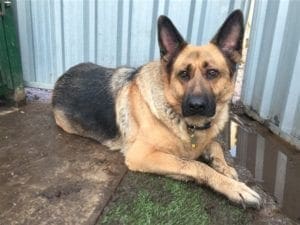
Strong, loyal, and protective. German Shepherds will form strong bonds with their human companions. Mental exercise is very important to these highly intelligent dogs, and early and ongoing socialization is crucial.
Common health problems affecting German Shepherds include:
Hip Dysplasia. This is the most common hereditary health problem in German Shepherds. The large frame of the German Shepherd makes it more likely to get this condition, but it is also likely to have been passed down from his parents. Hip dysplasia is the malformation of the hip joint(s). It is painful and debilitating, and results in osteoarthritis. As the condition progresses some dog may not want to walk, and may even need help getting up.
Degenerative Myelopathy CDRM. This is similar to multiple sclerosis in humans, it is the progressive paralysis of the hind legs. Degeneration means nerve impulses from the brain fail to reach the hind legs correctly. It is a disease which predominately affects this breed. Although the cause is unknown it is thought that it is a result of genetics. Treatment is very difficult; hydrotherapy is thought to help, and some owners decide to use a cart for their dog – where the movement of the back legs is replaced by wheels. Some dogs cope with this better than others.
Intervertebral Disc Disease (IDD). Although they are a nonchondrodystrophic dog the German Shepherd is prone to this condition. IDD is where the cushioning discs between the vertebrae of the spinal column either bulge or burst. This can cause pain, nerve damage, and even paralysis. There are back braces available which offer support, stability and stress relief for these dogs.
Epilepsy. This is quite shocking to witness but can easily be controlled with medication. Regular blood tests will also be required.
Anal furunculosis. This is a deep infection around the anus. It is probably caused by the German Shepherds large bushy tail, which hangs down over the anus and prevents air getting to the area.
Haemophilia A. This is a blood clotting problem, which can lead to uncontrollable bleeding. Females can be carriers, but it is male dogs who are affected by this disease.
Pancreatic insufficiency. This is when the dog becomes unable to digest food and therefore becomes very thin, with an excessive appetite. This disease is often life threatening, but can respond to treatment.
Bloat. This is a condition where the dog’s stomach produces excessive gas and enlarges. This is common in deep chested dogs, and is life threatening without immediate intervention.
Digestive problems. German Shepherds are notorious for digestive problems, especially chronic diarrhoea caused by food intolerances, colitis (inflammatory bowel disease), haemorrhagic gastroenteritis, or pancreatic in sufficiency. This breed needs to be fed a high quality food at all times.
Great Dane
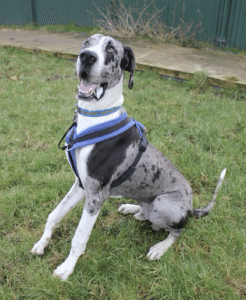
Known as the gentle giant, the Great Dane is easy going and mild-mannered. They don’t require lots of exercise but they do need space! They’ll be miserable in a cramped flat or backyard. They are also sociable and need companionship. They make their presence known with their bark, slobbering, and clumsy nature. Due to its size the Great Danes life span is only 7-10 years.
Common health problems affecting Great Danes include:
Addison’s disease. This is when there’s a deficiency or total loss of the hormones made by the dogs adrenal glands. These glands produce three different hormones; corticosteroids, aldosterone and cortisol. Antibodies eventually destroy the adrenal glands. Once this condition has been diagnosed in can be managed with medication, but this is very expensive.
Bloat. This is a condition where the dog’s stomach produces excessive gas and enlarges. This is common in deep chested dogs, and is life threatening without immediate intervention. It is the number one killer of Great Danes.
Hip Dysplasia. This condition is due to a deformity of the Great Danes hip socket. The socket and thigh bone do not fit together properly, and this loose fitting joint causes instability. Over time there will be further deterioration of the joint. It is painful and debilitating, and results in osteoarthritis. As the condition progresses some dogs may not want to walk, and may even need help getting up.
Hypothyroidism. This is when the thyroid gland doesn’t work properly. Hyperthyroidism means the glands are working overtime, secreting too much hormone, which causes a constant state of metabolic hyperactivity. The dog will lose weight despite being constantly hungry, drink excessively, urinate excessively, have an increased heart rate and also vomit. If left untreated this condition can cause heart and kidney failure. If there is a problem you may notice a dull coat, hair loss, lethargy, intolerance to cold weather, weight gain, and chronic skin disorders. To control this condition your dog will need daily medication.
Cardiomyopathy. This disease effects the heart muscle of the Great Dane. There are three types of this disease with dilated cardiomyopathy being the most common. It basically means that the heart is not strong; the chambers, usually the left ventricle, become enlarged, and the heart cannot pump blood effectively. This is a swift and silent killer.
Anal Sac Impaction. This condition occurs when the anal glands become blocked. The glands become infected and a very strong fishy odour occurs.
Wobblers Syndrome. This disease is caused by pressure to the spinal cord in the neck area of the dog. This results in pain around the neck and loss of coordination in the back legs. The severity of this disease affects each dog differently; for some it is totally incapacitating.
Panosteitis-Pano. This is a painful condition that occurs during the rapid growth phase of a Great Dane puppy causing lameness.
Greyhound

Greyhounds are dignified and calm, they are quiet dogs which are sensitive so do not do well in noisy or tense environments. This graceful breed is the fastest of them all, but he is built for speed rather than endurance. He needs a safe, enclosed space to gallop for a short time, but is then happy to sleep on the sofa for the rest of the day. Although generally good around other animals, you will always need to be vigilant around cats and other small animals.
Common health problems affecting Greyhounds include:
Anaesthetics and pesticides (flea treatments). Greyhounds do not do well with certain anaesthetics and pesticides. There is a long list of chemicals which should be avoided, these include barbiturates, and organophosphate based flea, tick and mange treatments. Always check medication with your vet first.
Polyneuropathy. This is a neurological disease which results in muscle weakness, exercise intolerance, and an odd ‘bunny-hopping’ gait. Symptoms usually occur in dogs of around 3 – 9 months of age, and progress to a point where most affected dogs are put to sleep before they are a year old.
Dental problems. For some reason Greyhounds often have problems with their teeth. It’s a good idea to get in the habit of checking them regularly and brushing them.
Corns. Most other dogs do not get corns, if they do they do not seem to be bothered by them. It is a very different story for Greyhounds. Their feet have very little fat between the pad surface and the bone. This means that getting corns can easily result in the dog becoming totally lame.
Bloat. This is a condition where the dog’s stomach produces excessive gas and enlarges. This is common in deep chested dogs, and is life threatening without immediate intervention.
Fractures. Greyhounds are susceptible to fractures because of the high speeds at which they run. If they fall or hit something while running at full speed the result is often a broken limb.
Husky
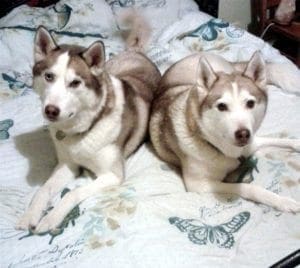
Huskies do love humans but they are originally a long distance sled dog, which makes them a very unsuitable household pet. They want to pull, not be walked on a lead. They also want to pursue small animals, and will jump and dig whenever they please. Huskies are one of the healthier pedigrees
They mainly suffer from these two conditions:
Hip Dysplasia. Huskies are prone to the abnormality of the hip joint in which the head of the thigh bone does not fit properly into its pelvic joint socket. This leads to inflammation, pain, and arthritis of the affected hip. It is aggravated by almost any movement.
Eye conditions. There are three eye conditions that affect the Husky – cataracts, corneal dystrophy, and progressive retinal atrophy. Each disorder is present in a different area of the eye, and need to be treated seriously.
Jack Russell Terrier

Jack Russell’s are very popular dogs – intelligent, playful, energetic, and fun-loving. They are clever, enthusiastic, and want to participate in everything. They are also good escape artists, barky, and love to dig. These obsessive ball chasers will hunt almost any small thing that moves.
Common health problems affecting Jack Russell Terriers includes:
Lens Luxation. This is when the lens dislocates in one or both eyes. In the early, stages – when the lens is only partially dislocated – it often goes unnoticed. However when the lens has fully dislocated, it causes the dog pain and the eye will change colour.
Cardiomyopathy. This is a weakening of the heart muscles. It is difficult to detect in the early stages, but when it is more advanced your dog may show signs of laboured breathing.
Hernias. This is when an internal organ or section of tissue protrudes outwards, and creates a noticeable bulge. The most common are called umbilical and inguinal. They involve part of the intestine protruding through either the lower navel or scrotum.
Hydrocephalus. This involves fluid accumulating in the brain and results in the dog’s head becoming enlarged/dome shaped. This condition leads to seizures and blindness, and quite dramatic behavioural changes. This is particularly dangerous for Jack Russell’s as it puts pressure on the brain tissue and causes it to degenerate.
Cerebellar Ataxia. This disease leads to brain cells dying off, more specifically the cells that control the dogs balance. In severe cases dogs will not be able to walk or stand.
Von Willebrand’s disease. This is a bleeding disorder caused by abnormal platelet function. The result is excessive bleeding. Other symptoms include bleeding gums, sudden nose bleeds, and blood in urine.
Obesity. Jack Russell’s can quickly become obese if they are not exercised enough and given the wrong foods and too many treats. Excess weight is very unhealthy; putting strain on the heart and joints.
Ear problems. The most common two are infections and deafness.
Labrador

Well known for being smart, playful, and friendly, these are one of the most popular breeds around. They are kind and very good natured so make friends with children quickly. They love exercise, and swimming is near the top of the list. A bored, unexercised Labrador is a boisterous and destructive one.
Common health problems affecting Labradors include:
Orthopaedic problems. These are very common in Labradors – hip dysplasia, elbow dysplasia, and luxating patella. All are progressive, and are painful and debilitating. They can lead to arthritic joints and lack of mobility. Other orthopaedic health problems include osteochondritis, panosteitis, cruciate ligament rupture, wobbler’s syndrome, and hypertrophic osteodystrophy.
Eye diseases. Progressive retinal atrophy will lead to blindness, cataracts can appear at any age. Retinal dysplasia can range from mild to severe and can be accompanied by a form of dwarfism. Eyelid abnormalities include entropion (rolling inwards of the eyelids) and ectropion (rolling outwards of the eyelids).
Tumours and cancers. Mast cell tumours, melanoma, histiocytic sarcoma, digital squamous cell carcinoma are all common.
Ear infections. The Labradors long, floppy ears cover the ear canal and trap warm, moist air. This is a perfect breeding ground for bacteria and infection.
Bloat. This is a condition where the dog’s stomach produces excessive gas and enlarges. This is common in deep chested dogs, and is life threatening without immediate intervention.
Poodles

This cuddly little dog is intelligent, playful, and dignified, and can live up to 18 years. Often mistaken as a ‘sissy’ dog Poodles are actually very smart, and are one of the most trainable dogs around. They love to think and learn – mental stimulation is extremely important to them. If treated in the wrong way they can become nervy and neurotic.
Common health problems affecting Poodles include:
Skin tumours. These are a result of abnormal cell growth on a dog’s skin. They can be malignant or benign, the only way to know is to carry out a biopsy.
Bladder stones. These occur when there are high concentrations of minerals in the urine. Bladder infections can also lead to bladder stones.
Tracheal Collapse. This occurs as a weakening in the cartilage rings of a dog’s windpipe. You can protect the trachea by using a harness and not a collar.
Cushing’s disease. This is a very serious condition which occurs when the adrenal glands produce too much cortisol.
Eye conditions. Cataracts – this is when the lens of the eyeball becomes cloudy, affecting the dogs sight. Progressive Retinal Atrophy – this will eventually lead to blindness.
POODLES (STANDARD). Of the three Poodle sizes, this is the one most prone to serious health problems.
Eye conditions. Cataracts – this is when the lens of the eyeball becomes cloudy, affecting the dogs sight. Progressive Retinal Atrophy – this will eventually lead to blindness. Other eyes diseases include corneal ulcers, eyelash abnormalities, retinal dysplasia, and glaucoma.
Cancer. A high percentage of Standard Poodles die from cancer, most commonly digital squamous cell carcinoma, which originates in the toenails.
Skin conditions and growths. Allergies which cause itchy skin can lead to pyoderma can be problematic. Papillomas and sebaceous cysts, and Basel cell tumours also affect this dog.
Bloat. This is a condition where the dog’s stomach produces excessive gas and enlarges. This is common in deep-chested dogs, and is life threatening without immediate intervention.
Hormonal/endocrine diseases. The most common are Addison’s disease, hypothyroidism, Cushing’s, and diabetes.
Pug

Sweet natured and playful, Pugs are sociable and devoted to their owners – so much so that they will become your shadow. If they are spoilt too much they can become overbearing. Toilet training may be difficult too.
Common health problems affecting Pugs include:
Brachycephalic Airway Obstruction Syndrome. The Pug is a brachycephalic breed – meaning short and broad skull. They have a reduced skull length, but the amount of soft tissue in their airways is not reduced, so the normal amount of tissue is forced in to a smaller bony area. This tissue obstructs the airflow. Pugs usually have small, narrow nostrils so this means it is even harder to get enough oxygen in. Pugs can overheat and die.
Brachycephalic Ocular Syndrome. The extreme shape of the pugs head means they are prone to several eye conditions which are irritating and painful. The flat shape of the face means the eyes bulge out, putting them at risk of injury and of actually popping out altogether. Sometimes the eyelid cannot close fully over the eye ball, this leads to dry eye, infections, and ulcers. These problems can lead to blindness.
Hemivertebrae. Pugs commonly have deformed spines. This can put pressure on the spine, and cause much pain and loss of function in the back legs.
Skin conditions. These are common due to the excessive folds of skin. These warm, dank places are a perfect breeding ground for bacteria and can soon become infected.
Flatulence. This may seem amusing but it occurs because Pugs excessively gulp and swallow air to try and overcome their breathing difficulties. They are literally struggling to breathe. They also grunt and snore loudly because their airways are so restricted.
Giving Birth. The Pug has been bred specifically to look the way it does – with a large head and flat face. Both of these characteristics are life threatening when it comes to giving birth. The size of the pups head mean that it is unlikely the mother will be able to give birth naturally. A caesarean section is the best way to ensure the pups are born alive. A vet may be able to tell you if the mothers hips and pelvis are wide enough to try and deliver naturally, but if you do not plan ahead for a C-section then the risks are far greater to mother and pups. To add to her difficulties, the mothers existing breathing problems will be put under even more pressure, causing her much stress and discomfort.
The veterinary term used to describe difficulties giving birth is Dystocia.
Rottweiler

The Rottweiler ‘Rottie’ is a strong, demanding, loyal dog, and they relish human contact. They have a strong guarding instinct, which is often exploited. They need physical and mental exercise, and this muscular dog must have space. Socialisation from an early age is crucial, this will help control their territorial instincts and any aggressive streak they may have.
Common health problems affecting Rottweilers include:
Aortic Stenosis. This is due to the partial obstruction to the flow of blood as it leaves the left side of the heart (the left ventricle) through the main blood vessel (the aorta) that carries the blood to the rest of the body. Due to the obstruction the heart must work harder.
Hip Dysplasia. This is when the head of the thigh bone does not fit properly into its pelvic joint socket. This leads to inflammation, pain, and arthritis of the affected hip. It is aggravated by almost any movement. As the condition progresses some dogs may not want to walk, and may even need help getting up. Due to the Rottweilers large, muscular frame there is more strain than usual put on the hip joint.
Elbow Dysplasia. This term refers to several conditions that affect the elbow joint; osteochondrosis of the medial humeral condyle, fragmented medial coronoid process, ununited anconeal process and incongruent elbow. More than one of these conditions may be present, and often affects both front legs. They cause great pain, and affect the dog’s freedom to move.
Entropion. This is the rolling inwards of the eyelids, which causes the eyelashes to rub on the surface of the eye. This is distressing and painful, and damages the eye.
Ectropion. This is the rolling outwards of the eyelids, which can lead to conjunctivitis.
Cruciate ligament rupture. These are the ligaments which cross over behind the kneecap, holding the top and the bottom parts of the hind legs together. These can rupture or snap completely, which requires surgery.
Cancer. Lymphoma, bone, liver and spleen cancer are all unfortunately common in Rottweilers.
Wet eczema. This is very common and is due to the fact these dogs have such thick coats. Something as simple as a single flea bite or nip from another animal can start things off. A weeping mess can appear very quickly, and spread even faster.
Shar Pei
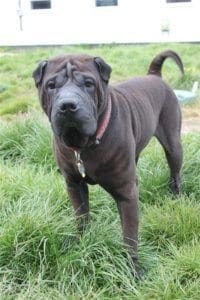
The Shar-Pei is calm, confident, and sometimes aloof. They are naturally very clean dogs, and well-mannered in the home. Originally from China, these wrinkly dogs were used for hunting and guarding – also for fighting. For this reason, some Shar-Pei’s may be prone to aggression.
Common health problems affecting Shar-Pei’s include:
Entropion. This is where the eyelid rolls inwards the eye, rubbing against the cornea, causing pain and irritation. Watery eyes, infection, and ulcers can occur, and surgery is often required. The cause of this in Shar Pei’s is the relatively small eyes which are surrounded by loose, wrinkly skin.
Eye Tacking. Shar Pei puppies open their eyes at 10-14 days, and this is often when the first symptoms of Entropion are seen. Stitches are placed in the eyelid to help roll the lids outwards (Eye Tacking). The aim of this is to prevent serious eye damage until the puppy is old enough to have corrective surgery (6-8 months)
Cherry eye. This is when the usually unseen third eyelid pops out because the gland has become unattached. It usually appears in the corner of the eye as a red blob. Sometimes this can obscure sight, and if left untreated it can cause problems. Surgery may work, but if it fails then further surgery is usually undertaken which involves removing the gland altogether. This will leave the dog with dry eye for the rest of its life, which requires daily treatment.
Hypothyroidism. This is when the thyroid gland doesn’t work properly. Hyperthyroidism means the glands are working overtime, secreting too much hormone, which causes a constant state of metabolic hyperactivity. The dog will lose weight despite being constantly hungry, drink excessively, urinate excessively, have increased heart rates, and also vomit. If left untreated this condition can cause heart and kidney failure. If there is a problem you may notice a dull coat, hair loss, lethargy, intolerance to cold weather, weight gain, chronic skin disorders. To control this condition your dog will need daily medication.
Shar-Pei Fever and Amyloidosis. This is an episodic fever disorder, which is thought to result from an inability to regulate the immune system. Dogs have bouts of unexplained fever, where their temperature goes to just about 100 degrees. Dogs suffering from this disorder are also at risk from dying of the related disorder – Amyloidosis. It is thought that the Shar-Pei’s wrinkles are linked to this condition.
Demodectic Mange. Demodectic mange is caused by the demodex mite. All dogs have these mites, and the dogs own immune system will keep the number of mites in check. Problems begin when the dog’s immune system cannot, for some reason, cope.
Ear problems. Shar-Pei’s are bred to have very small, flat ears. This results in very narrow ear canals. When infected and inflamed these can be extremely painful and very difficult to treat; in fact, most Shar-Pei’s will just not allow you to do it. This is so much of a problem that it is officially recommended that puppies begin ‘ear cleaning training’ at a young age.
Skin Problems. Skinfold dermatitis is common due to the intentional breeding for excessive skin folding. This causes recurring bouts of skin irritation, infection, and soreness.
Brachycephalic airway obstructive syndrome. This is caused by the shape of the skull, and results in breathing difficulties.
Stenotic Nares. This is the medical term for a serious condition of the Shar Pei’s nose. As the nostrils are so narrow this puts a great deal of stress on the respiratory system, and the whole of the Shar Pei’s body.
The Chinese Shar-Pei. It is said that you should only get this breed of dog is you are happy to continually give your vet large chunks of money. It is so deformed that the list of conditions it can suffer from seems almost endless.
Shih Tzu

The popular Shih Tzu is lively and outgoing, and despite his small size loves play and exercise. He’s a wonderful companion, who loves to cuddle up on laps but remember temperaments will vary and their long coat will require lots of attention. House training can also be difficult.
Common health problems affecting Shih Tzu’s include:
Brachycephalic ocular syndrome. Due to the extremely short head shape and the consequences of this on the shape and position of the eyes, several eye conditions are common, which lead to chronic irritation and pain. Infections are common because the eyes bulge outwards and have shallow sockets.
Brachycephalic airway obstructive syndrome. The cause of this is the head, which is far too small, and the too short a muzzle and pinched nostrils. The result is difficulty breathing. In high temperatures Shih Tzu’s can find it hard to breath altogether, and may suffer from collapse or heatstroke.
Teeth. As the mouth is so small, teeth are often overcrowded and in poor condition.
Body. The Shih Tzu has short legs, a curly tail, and immobile ears. All of this means it is difficult to signal and communicate with other dogs.
Grooming. The long coat needs constant attention. If it is not regularly groomed and trimmed it will impact on the dog’s quality of life. Take extra care around the eyes and face.
Intervertebral Disc Disease (IDD). As one of the chondrodystrophic breeds (others include Dachshund, Corgi, Pekinese, Lhasa Apso), the Shih Tzu is prone to this condition. Chondrodystrophic dogs tend to have short legs and longer backs. IDD is where the cushioning discs between the vertebrae of the spinal column either bulge or burst. This can cause pain, nerve damage, and even paralysis. Chondrodystrophy is unfortunately just seen as a characteristic of pedigrees which have these exaggerated features. There are back braces available which offer support, stability and stress relief for these dogs.
Stenotic Nares. This is the medical term for a serious condition of the Shih Tzu’s nose. As the nostrils are so narrow this puts a great deal of stress on the respiratory system, and the whole of the Shih Tzu’s body.
Harderian Gland Prolapse. This refers to the eye lid. All eye lids have glands which produce tears, with the condition the gland becomes swollen and as the gland moves around due to a loose connection, it can lead to swelling, excessive discharge, bloody ulcerations and conjunctivitis. Surgery may be required.
Springer Spaniels

This high-spirited tail wagger loves mud and water and must have a lot of exercise. Without it they become boisterous and difficult to control. Some become clingy, which means they can be destructive and anxious when left. Take care though – there are some dominance and aggression issues to deal with in some dogs.
Common health problems affecting Springer Spaniels include:
Hip Dysplasia. This is when the head of the thigh bone does not fit properly into its pelvic joint socket. This leads to inflammation, pain, and arthritis of the affected hip. It is aggravated by almost any movement. As the condition progresses some dog may not want to walk, and may even need help getting up.
Elbow Dysplasia. This term refers to several conditions that affect the elbow joint; osteochondrosis of the medial humeral condyle, fragmented medial coronoid process, ununited anconeal process and incongruent elbow. More than one of these conditions may be present, and often affects both front legs. It causes pain and leads to restrictive movement.
Luxating patella. This affects the dog’s knees, and affects walking as the kneecap pops out of place. This can affect both legs and be extremely debilitating and painful.
Ear and skin conditions. These are very common in Springers, especially allergies which cause itchy skin and lead to pyoderma (bacterial infection). Chronic ear infections occur because of the dogs long floppy ears and long hair inside the ear canals.
PKF. This is when a Springer is born without an important red blood cell enzyme. Red blood cells carry oxygen to your dog’s muscles, without this oxygen the dog suffers from episodes of sudden weakness. When this happens IV fluids are required.
Epilepsy. This is quite shocking to witness but can easily be controlled with medication. Regular blood tests will also be required.
Rage Syndrome. This bizarre neurological/behavioural syndrome is where the affected dog suddenly becomes violently aggressive. It is thought that this could be related to extreme dominance. Dogs with this condition are often put to sleep.
Staffordshire Bull Terrier

These are energetic, impulsive dogs, who can’t see the point in walking when there’s running and playing to do! They need a lot of exercise to burn off their energy and maintain their beautiful muscle tone. They crave company and will want to be with you all the time. Staffies MUST be well socialised with other animals and people. They will then be happy to get along splendidly with everyone. Remember – if challenged it’s unlikely that he will walk away so be responsible at all times. You’ll also need to provide the strongest toys to keep his powerful jaws occupied – rather that than your furniture!
Common health problems affecting Staffordshire Bull Terriers include:
Hip Dysplasia. This is when the head of the thigh bone does not fit properly into its pelvic joint socket. This leads to inflammation, pain, and arthritis of the affected hip. It is aggravated by almost any movement. As the condition progresses some dogs may not want to walk, and may even need help getting up.
Elbow Dysplasia. This term refers to several conditions that affect the elbow joint; osteochondrosis of the medial humeral condyle, fragmented medial coronoid process, ununited anconeal process and incongruent elbow. More than one of these conditions may be present, and often affects both front legs. This is painful and effects movement.
Luxating patella. This affects the dog’s knees, and affects walking as the kneecap pops out of place. This can affect both legs and be extremely debilitating and painful.
Atopic dermatitis. This allergy is an itchy, scratchy condition, and affected dogs suffer hair loss and sore spots.
Demodectic Mange. Demodectic mange is caused by the demodex mite. All dogs have these mites, and the dogs own immune system will usually keep the number of mites in check. Problems begin when the dog’s immune system cannot, for some reason, cope. Dogs will develop red, bald, scaly skin, and the dogs skin feels hot to touch.
Deafness. This can occur in Staffies with a lot of white on their head.
Cancer. The Staffy is predisposed to mast cell tumours, a cancer of the immune system. These can occur in various forms and can be benign or malignant. They can cause itching, discomfort, and pain, and can sometimes affect internal organs.
West Highland Terrier

The popular West Highland Terrier (Westie) is a cheerful, friendly dog. Bold and confident, they are adaptable and happy to be around other dogs. Rabbits, rodents, and other small animals are not safe when a Westie is about! They also love to dig and bark, and can be possessive of their food and toys.
Common health problems affecting West Highland Terriers include:
Allergies. Westies are very prone to allergies that cause itchy skin. They also suffer from a rare and nasty condition called Epidermal dysplasia, otherwise known as Westie Armadillo syndrome. This begins to affect dogs at 3 to 6 months old, making their head, belly, and feet inflamed and itchy. This painful condition spreads over the whole dog’s body, causing hair loss and recurrent skin yeast infections. The dog truly suffers, and the condition is incurable.
Orthopaedic diseases. Westies face many joint problems, these include Luxating patella’s and Legg-Calve-Perthes. Luxating patella’s affects the dog’s knees, and affects walking as the kneecap pops out of place. This can affect both legs and be extremely debilitating and painful. Legg-Calve-Perthes involves spontaneous degeneration of the head on the femur bone, which is located in the dog’s hind leg. This results in osteoarthritis, and can leave the dog lame, hopping to keep the weight of the affected limb, wasting of thigh muscles, and extreme pain.
Craniomandibular osteopathy. This is a bone disease of growing dogs. It affects the bones of the skull, lower jaw, bone surrounding the middle ear, and the bone which forms the joint with the lower jaw. This usually begins at an early age. The jaw swells, it is painful to eat or move the jaw, and sometime it cannot be opened at all.
Digestion. Digestive diseases such as colitis and pancreatitis are both common.
White Shaker Dog Syndrome. This is a poorly understood neuromuscular disease that causes tremors. It can develop suddenly in dogs around two years old, and can lead to seizures and difficulty walking.
Pulmonary fibrosis. This acute pneumonia is so common in Westies that it is also known as Westie lung disease. Pulmonary fibrosis results in scar build up in the lung tissue, this makes breathing very difficult and eventually leads to death. Sadly, there is no cure for this disease.
Copper Toxicosis. Also known as copper storage disease, this is a serious condition where copper accumulates in the liver. This build up usually starts in early life, and takes time to build up so you may not see symptoms until 3- 6 years old. This disease is fatal if not treated, but many of the medications offered have horrible side effects.
Yorkshire Terrier

These are lively, inquisitive dogs, which are very lovable companions. Depending on how the Yorkie is ‘brought up’ really determines how they turn out – they can be a vigorous terrier, or a pampered pooch. They can be vulnerable though – they can be hurt very easily. Barking and toilet training can be very problematic.
Common health problems affecting Yorkshire Terriers include:
Size. The fact the Yorkie’s are so small is in itself a major problem. Bone fractures or concussion can occur from jumping or falling, being hit by a falling object, or being accidentally stepped on. They can choke on the tiniest object, and be overdosed on very little of anything toxic. Other dogs, be it through play, accident, or aggression, can break a Yorkie’s neck very easily.
Liver shunt. Also known as portosystemic shunt, this condition is characterized by abnormal blood flow from the intestine that effectively bypasses the liver. When still inside the mother, the mother’s liver filtered out any toxins via a bypass of their portal blood vessels. After birth the shunts should close rapidly within the puppy. If this closure doesn’t occur then their blood doesn’t filter through the liver as it should, and toxins accumulate in the body. Medication can help, but surgery is often the best option.
Eye diseases. These include dry ear, cataracts, retinal dysplasia, and progressive retinal atrophy.
Heart disease. Patent ductus arteriosus, valve disease, and cardiomyopathy are common. Cardiomyopathy is a weakening of the heart muscles. It is difficult to detect in the early stages, but when it is more advanced your dog may show signs of laboured breathing.
Hormonal/endocrine diseases. The most common is Hypothyroidism. This is when the thyroid gland doesn’t work properly. Hyperthyroidism means the glands are working overtime, secreting too much hormone, which causes a constant state of metabolic hyperactivity. The dog will lose weight despite being constantly hungry, drink excessively, urinate excessively, have an increased heart rate, and also vomit. If left untreated this condition can cause heart and kidney failure. If there is a problem you may notice a dull coat, hair loss, lethargy, intolerance to cold weather, weight gain, chronic skin disorders. To control this condition your dog will need daily medication. Others include Cushing’s disease, and diabetes.
Tracheal Collapse. This occurs as a weakening in the cartilage rings of a dog’s windpipe. You should help protect the trachea but not using a collar, use a harness instead.
Luxating Patella’s. This affects the dog’s knees, and affects walking as the kneecap pops out of place. This can affect both legs and be extremely debilitating and painful.
Donate Here
Lost & Found Pets

Merchandise
Exclusive merchandise available direct from the rescue. Don't miss out, follow the link to make your purchase today.


